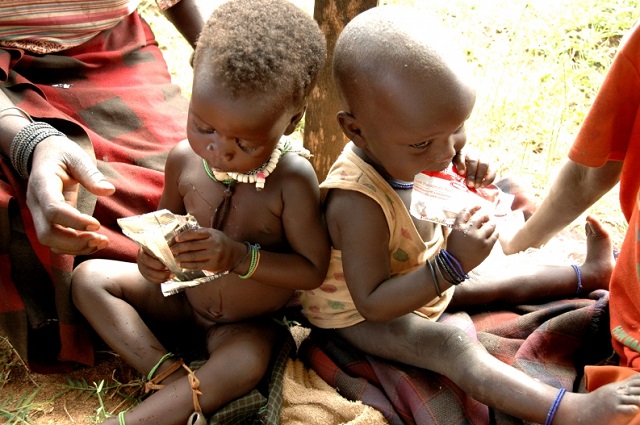
Kampala, Uganda | THE INDEPENDENT | More children under the age of five are likely to suffer from wasting and become dangerously undernourished.
Wasting is a life-threatening form of malnutrition which makes children too thin and weak and puts them at greater risk of dying poor due to growth, development, and learning.
The warning by experts comes at the backdrop of a baseline survey into people’s livelihoods during the COVID-19 lockdown that was carried out by the Food Rights Alliance in collaboration with Twaweza Uganda.
According to the survey, 57 percent of respondents said that they were forced to eat one type of food as they could not afford to diversify their meals. 55 percent reduced the size of their meals just to ensure that the little they hard could take them through the lockdown.
However more worrying is that 27 percent of children in some areas could spend some days without a meal.
Agnes Kirabo, the Executive Director, Food Rights Alliance, says that soon the challenges of accessing food, rationing meals and eating one given type of food are much likely to translate in malnutrition and wasting in worst cases.
“The impact has not been felt but soon, everything will be clear. If children went days without eating, having the meals rationed whereas others were eating one type of meal, all these are pointers. Some families have not been able to buy some types of foods to the fact that their incomes had reduced,” says Kirabo.
Although Uganda performs relatively well against other developing countries in terms of malnutrition burden among its under-five population, basing on the finding Kirabo stresses that Uganda is likely to miss its projections for reducing stunting in children.
As of 2016, the Uganda national prevalence of under-five overweight stands at 3.7 percent, stunting is at 28.9 percent and wasting is estimated to be 3.5 percent.
Christine Anyumel, an independent nutritionist at Healing Naturally Together (HNT), says the three to four months’ period of the lockdown is huge and if a child and older persons as well, has not been receiving all the required food values in their right amounts, it is very likely that they will be malnourished.
Anyumel blames the expected increase in child malnutrition to declines in household incomes, changes in the availability and affordability of nutritious foods, and interruptions to health, nutrition, and social protection services in Uganda.
However, she notes that areas that have low incomes and those where malnutrition prevalence has been high will record more cases.
The United Nations Children’s Fund-UNICEF has already raised a similar red flag noting that an additional 6.7 million children are at risk globally, and without urgent action, the number of children suffering from wasting could reach 54 million over the year. This would bring global wasting to levels not seen this millennium.
According to an analysis that was published in The Lancet this week, 80 percent of the children at risk of being affected are expected from sub-Saharan Africa and South Asia.
UN agencies have warned that the estimated increase in child wasting is only the tip of the iceberg. COVID-19 will also increase other forms of malnutrition in children and women, including stunting, micronutrient deficiencies, and overweight and obesity as a result of poorer diets and the disruption of nutrition services.
******
URN
 The Independent Uganda: You get the Truth we Pay the Price
The Independent Uganda: You get the Truth we Pay the Price


